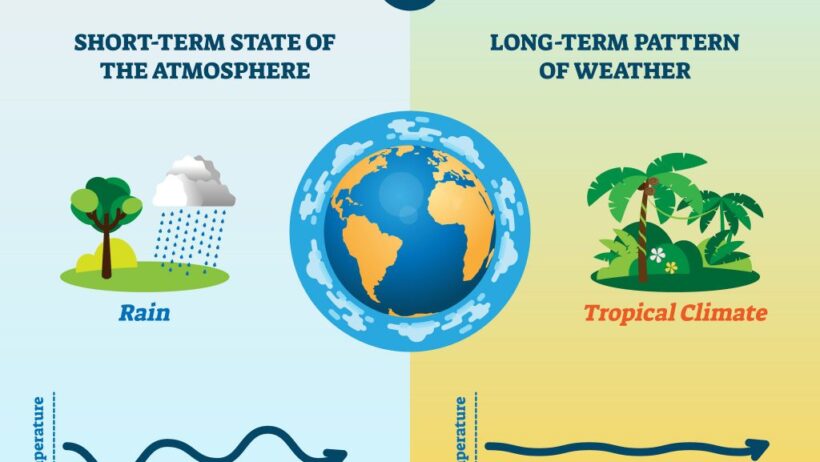Climate change is an enigmatic puzzle that intertwines complex climatic phenomena, and its effects extend far beyond terrestrial environments, reaching deep into our oceans, which cover over 70% of the Earth’s surface. The delicate equilibrium established by marine ecosystems—which has flourished for millennia—is increasingly disrupted by human-induced activities, leading to profound imbalances that threaten marine biodiversity and ecosystem health.
The oceans serve as the planet’s lungs, absorbing about a quarter of the carbon dioxide emissions from burning fossil fuels and other anthropogenic sources. However, this vital function is double-edged: as more carbon dioxide permeates ocean waters, it undergoes a series of chemical reactions that lead to ocean acidification. This phenomenon is characterized by the decrease in pH levels, which diminishes the oceans’ alkalinity. The intricacies of this process might elude casual observation, yet its ramifications reverberate throughout marine ecosystems.
One of the most conspicuous consequences of ocean acidification is the peril it poses to calcifying organisms, such as corals, mollusks, and certain species of plankton. These organisms rely on calcium carbonate to construct their shells and skeletons. As the ocean becomes more acidic, the availability of carbonate ions decreases, making it increasingly challenging for organisms to maintain their structures. This can lead to weaker shells and, ultimately, higher mortality rates among these vulnerable species. The loss of such foundational organisms imperils entire food webs, as they form the bedrock of marine habitats and are pivotal for the survival of myriad higher trophic levels.
The repercussions extend into the realm of biodiversity. Coral reefs, often dubbed the “rainforests of the sea,” are particularly sensitive to changes in water chemistry. These vibrant ecosystems are home to an estimated 25% of all marine species, and their degradation could lead to rampant biodiversity loss. The brightness of coral reefs is not merely a spectacle; their health indicates the overall vitality of marine ecosystems. A shift in water composition can result in mass bleaching events, where corals expel the symbiotic algae that provide them with energy through photosynthesis, ultimately leading to widespread coral death.
Furthermore, ocean acidification alters nutrient dynamics and productivity in marine environments. Ocean stratification, influenced by climate change, can exacerbate nutrient limitation in certain regions, resulting in a disarray of phytoplankton communities. These microscopic plants are the primary producers in the ocean, forming the foundational level of marine food webs. A disruption in their populations can lead to cascading effects on marine life, affecting everything from small fish to large predators.
Another insidious impact of climate change on ocean balance is the alteration of species distributions. As water temperatures rise due to global warming, marine species are migrating towards cooler, deeper waters or higher latitudes. This shift can lead to ecological mismatches, where predators and prey may no longer share the same habitats, disrupting predator-prey dynamics. Changes in seasonal behaviors, such as breeding and feeding patterns, can have lasting impacts on population dynamics, leading to declines in certain species, while others may proliferate uncontrollably, further unbalancing the ecosystem.
In addition to thermal and chemical changes, ocean deoxygenation compounds the overall stress placed on marine ecosystems. The increased stratification of ocean waters and the resultant stagnation in some regions lead to diminished oxygen levels. Hypoxic zones—areas with significantly low oxygen concentrations—are becoming more pronounced, creating ‘dead zones’ that can devastate marine life. Fish and other aerobic organisms that cannot survive in low-oxygen environments are often forced to relocate or perish, further aggravating the balance of marine ecosystems.
Coastal communities and their economies, intimately intertwined with healthy marine ecosystems, are also feeling the weight of these changes. Fisheries, a vital source of sustenance and economic security for millions, are jeopardized as key fish stocks decline due to habitat degradation and shifting species distributions. The socio-economic fabric of communities reliant on stable fish populations is unraveling, as job losses and food insecurity emerge, adding another layer of complexity to the climate crisis.
As the effects of climate change press forth, one must also contemplate the interconnectivity of oceanic and atmospheric systems. The exchange of heat and carbon between the oceans and the atmosphere is inextricable, meaning that changes in one realm invariably affect the other. Rising sea levels and altered weather patterns triggered by climate change create a feedback loop that further exacerbates oceanic imbalances, illustrating the need for a comprehensive understanding of these interlinked systems.
In light of these overwhelming transformations, the quest for solutions necessitates collaborative international efforts. Protecting marine ecosystems through sustainable practices, mitigating carbon emissions, and enforcing stricter regulations on pollutants are pivotal steps that can help restore the delicate balance of ocean environments. Understanding the implications of human activity on ocean health is also vital. Public awareness and education play substantial roles in shaping a sustainable future for marine ecosystems as advocates push for policies that recognize the ocean’s integral role in climate regulation.
In sum, the oceans, once perceived as vast and unfathomable, are now revealing their vulnerability in the face of climate change. The intricate tapestry of life they support and the vital functions they perform demand urgent attention. As the rhythm of the ocean’s balance falters under the weight of human actions, it is imperative that we act decisively to safeguard these essential waters for generations to come.



